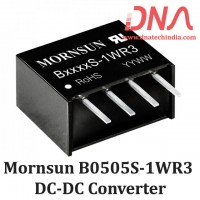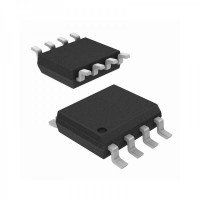Temperature Based Fan Speed Control |
Introduction: |
|
In this project we will be using the concept of firing angle to control fan speed. Basically in this project we will be controlling fan speed with respect to the temperature. |
|
The system will get the temperature from the temperature Sensor via the ADC and it will control the speed according the set poing set by the user. The circuit consists of four switches based keypad, in which two buttons are used to increment and decrement the temperature value and the remaining two buttons are used to activate and deactivate the whole system. |
|
In this project, an 8051 based microcontroller forms the processing part, which firstly senses the temperature via the ADC the controller then compares the data with the set temperature which the user can set via the keypad. If the current temperature is greater than the set temperature the controller turns ON the fan and the set speed will be proportional to the difference between the set temperature & the current temperature. If the current temperature is less than the set temperature the fan will be turned OFF. We will be using a Triac to provide the requirefiring angle to the fan and the fan speed will change accordingly. We will be interfacing four seven segment displays which will be used to display the set temperature as well as the current temperature. |
Block Diagram: |
|
|
|
Application consists of the following section: |
1. Microcontroller : |
|
The controller is the heart of entire system, and the whole system should be analyzed in selecting the proper controller. The following items should be considered when selecting a controller: |
|
1 Type of input sensor. 2 Type of output required. 3 Control algorithm needed. 4 Number and type of outputs . |
|
We will be using ATMEL’s AT89S52 microcontroller. It is a 40 pin microcontroller with 256 bytes RAM & 4kb flash memory. |
2. Keypad: |
|
The keypad consists of four switches, in which two buttons are used to increment and decrement the temperature value and the remaining two buttons are used to activate and deactivate the whole system. |
3. Temperature Sensor: |
|
We are using LM 35 as temperature sensor. LM 35 is a precision temperature sensor whose output is linearly proportional to Celsius Temperature. The LM35 is rated to operate from -55° Centigrade to 150° Centigrade with a linear scale factor of +10mv/° C. |
4. ADC: |
|
The output of the temperature sensor is an analog signal & cannot be directly given to the microcontroller. We need to convert this analog signal into digital so we will be using MCP3201 which is a successive approximation 12-bit ADC. The controller communicates with this device using SPI Protocol. |
5. Seven Segment Display: |
|
A seven-segment display, or seven-segment indicator, is a form of electronic display device for displaying decimal numerals that is an alternative to the more complex dot-matrix displays. |
|
Seven-segment displays are widely used in digital clocks, electronic meters, and other electronic devices for displaying numerical information. |
6. Triac: |
|
Triacs are found in many industrial and consumer products in such uses as light dimmers, motor speed controllers, heater controllers, or simply controlled switches for applying electrical power in response to the happening of some event. |
|
A triac is practically an open circuit until it receives a pulse of current into its "gate" terminal, whereupon it becomes practically a short circuit until the current flowing between its "main terminals" reaches zero, when it reverts to an open circuit and remains open until another pulse of gate current occurs. |
|
|
|
If a triac is connected in series between an electrical load and an AC line, the load is connected to the line when the triac is a short circuit. During the part of the cycle when the triac is an open circuit, the load is practically disconnected from the line. |
7. Power Supply: |
|
We require regulated plus and minus 5 volts for microcontroller, ADC, LCD & approximately 12 volts for the Relay. These voltages are generated from 230v line voltage. |
Hardware Requirement: |
|
Software Requirement: |
|
APPLICATION: |
|
Advantages: |
|
Future Scope: |
|
Text Books: |
|
Website: |
Magazines: |
|





